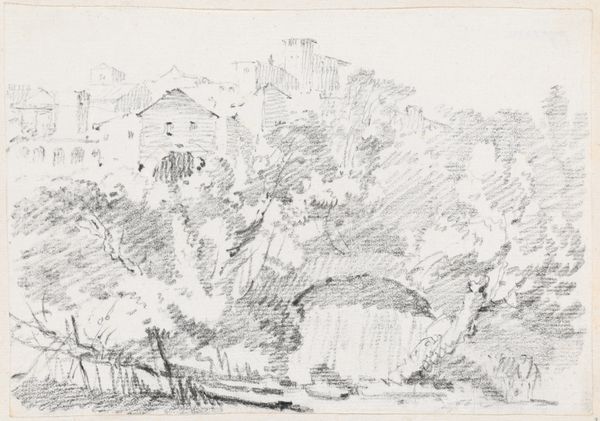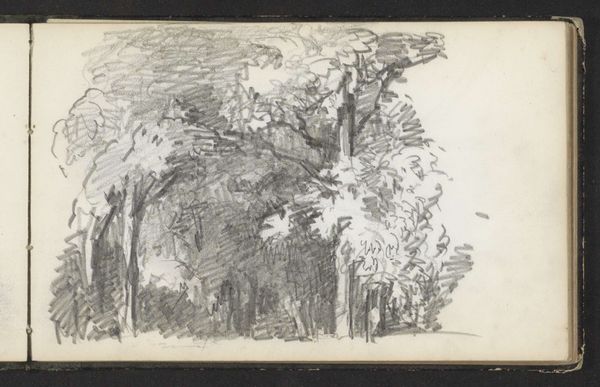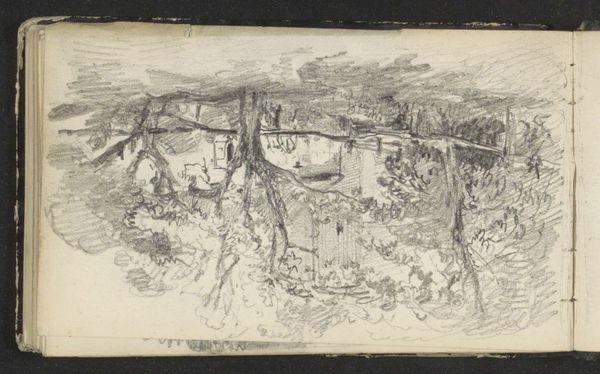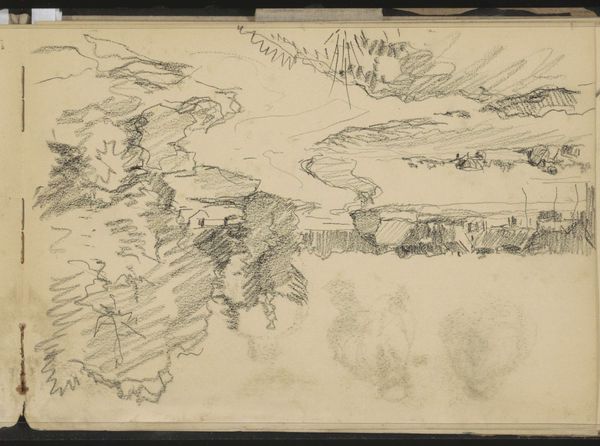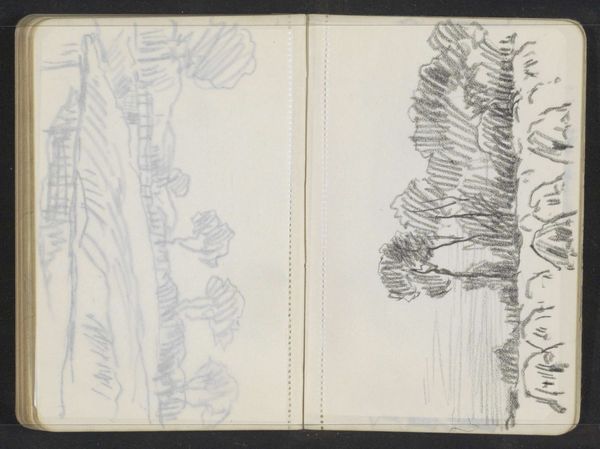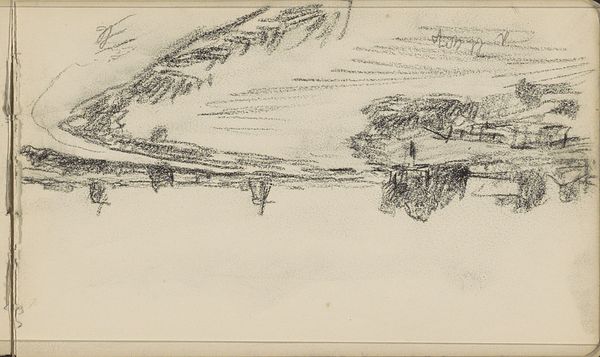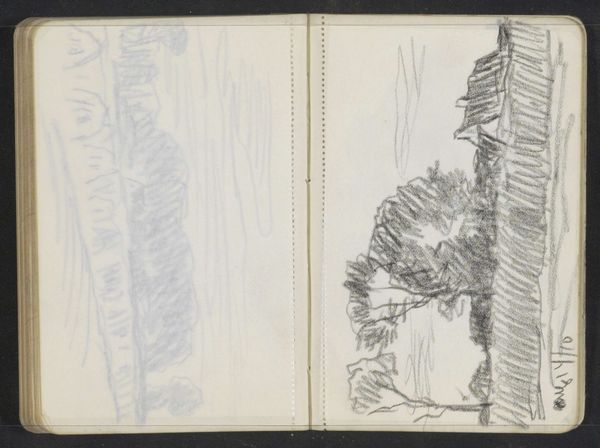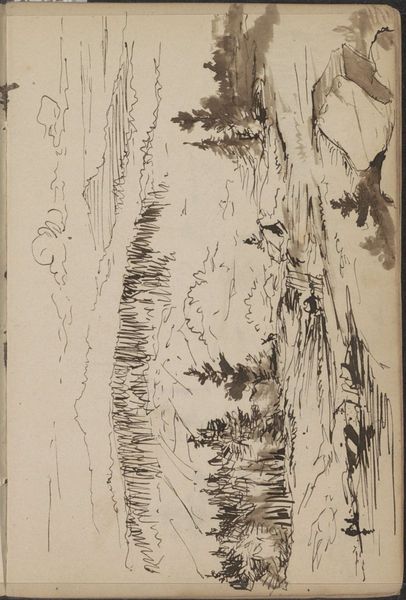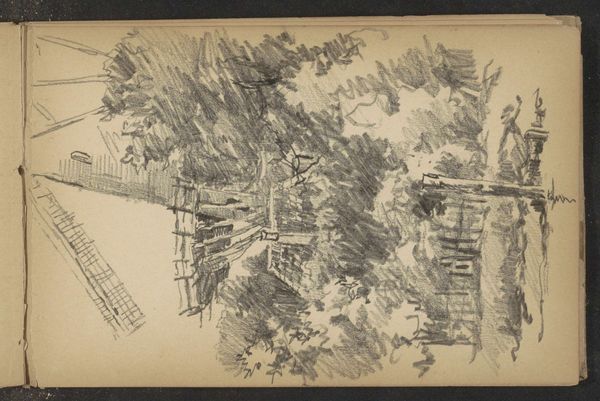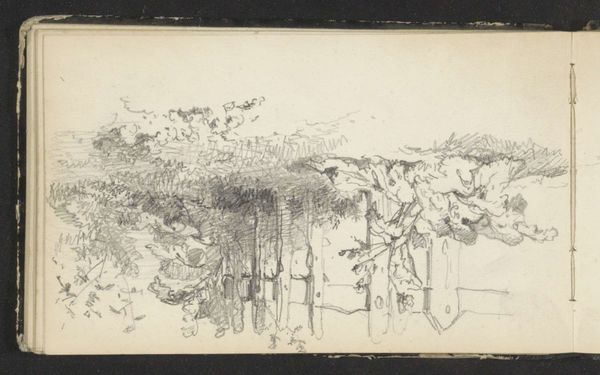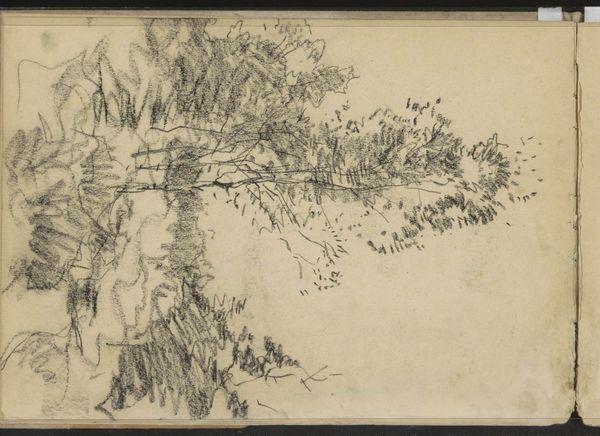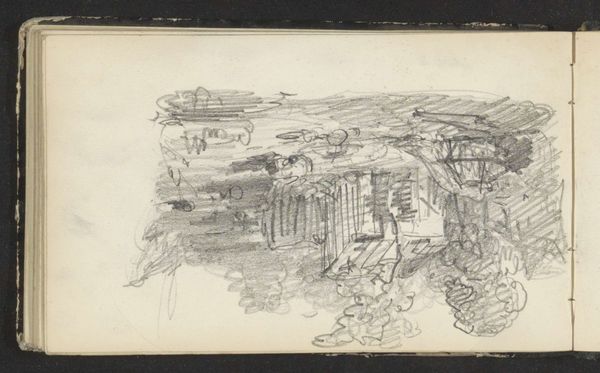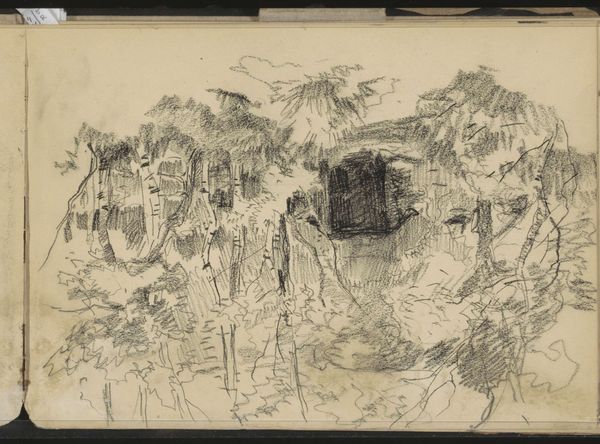
drawing, pencil
#
drawing
#
pen drawing
#
impressionism
#
landscape
#
pencil
#
realism
Copyright: Rijks Museum: Open Domain
Editor: Here we have "Landschap met struiken," or "Landscape with Bushes," a pencil and pen drawing by Maria Vos, dating from 1834 to 1906, currently held in the Rijksmuseum collection. It’s a quick sketch, seemingly capturing a fleeting moment in nature, but something about its deliberate roughness also feels quite composed. What stands out to you? Curator: Well, what I immediately find intriguing is how this landscape interacts with the burgeoning concept of "plein air" painting, especially for women artists of the period. Vos, though lesser known now, participated in a changing art world. These landscape sketches offered artists opportunities previously unavailable. Consider how the rise of industrialization changed urban spaces; did artists have a social imperative to rediscover, and even idealize, untouched nature? Editor: That's interesting. I hadn't thought about it in terms of societal changes influencing artistic choices like that. So, this drawing might not just be a study of nature but a reflection of broader anxieties about industrial growth? Curator: Exactly! The apparent casualness of the sketch could belie a conscious effort to portray a specific vision of the Dutch countryside – perhaps as a refuge. Consider the art market, too. These sketches weren't always just preparatory. Did they become commodities themselves, fulfilling a growing middle-class desire for idealized nature scenes? Editor: So, Vos is not just recording nature; she’s engaging with these social trends through her art. I suppose it challenges my initial perception of it as just a simple landscape. Curator: Precisely. Seeing it through the lens of the social and economic context offers richer perspectives. It makes us consider what power dynamics shaped what was produced, consumed and collected in art in the 19th Century. Editor: I’ll definitely look at landscape art differently from now on, thinking about societal influences and the artist's possible intention. Thank you. Curator: A pleasure. It highlights how seemingly simple artworks can become cultural documents when properly contextualized.
Comments
No comments
Be the first to comment and join the conversation on the ultimate creative platform.
